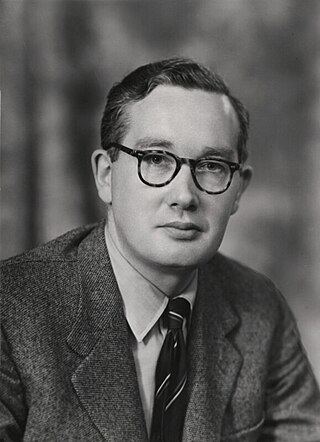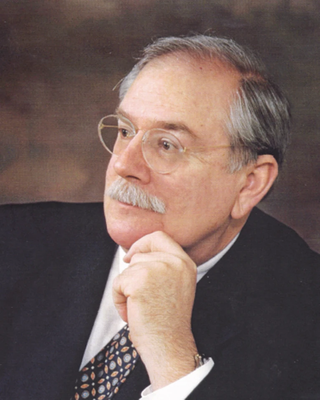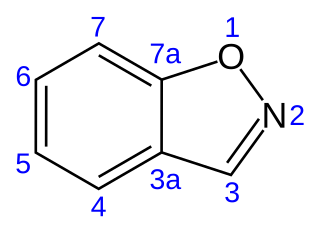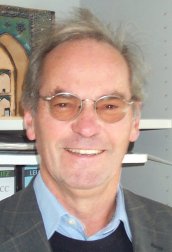Related Research Articles

Elias James Corey is an American organic chemist. In 1990, he won the Nobel Prize in Chemistry "for his development of the theory and methodology of organic synthesis", specifically retrosynthetic analysis.

Sir Derek Harold Richard Barton was an English organic chemist and Nobel Prize laureate for 1969.

David A. Evans was an American chemist who was the Abbott and James Lawrence professor of chemistry at Harvard University. He was a prominent figure in the field of organic chemistry and his research focused on synthetic chemistry and total synthesis, particularly of large biologically active molecules. Among his best-known works is the development of aldol reaction methodology.

N-Bromosuccinimide or NBS is a chemical reagent used in radical substitution, electrophilic addition, and electrophilic substitution reactions in organic chemistry. NBS can be a convenient source of Br•, the bromine radical.
The Barton–McCombie deoxygenation is an organic reaction in which a hydroxy functional group in an organic compound is replaced by a hydrogen to give an alkyl group. It is named after British chemists Sir Derek Harold Richard Barton and Stuart W. McCombie.

1,2-Benzisoxazole is an aromatic organic compound with a molecular formula C7H5NO containing a benzene-fused isoxazole ring structure. The compound itself has no common applications; however, functionalized benzisoxazoles and benzisoxazoyls have a variety of uses, including pharmaceutical drugs such as some antipsychotics (including risperidone, paliperidone, ocaperidone, and iloperidone) and the anticonvulsant zonisamide.
The Corey–Kim oxidation is an oxidation reaction used to synthesize aldehydes and ketones from primary and secondary alcohols. It is named for American chemist and Nobel Laureate Elias James Corey and Korean-American chemist Choung Un Kim.
The Hunsdiecker reaction is a name reaction in organic chemistry whereby silver salts of carboxylic acids react with a halogen to produce an organic halide. It is an example of both a decarboxylation and a halogenation reaction as the product has one fewer carbon atoms than the starting material and a halogen atom is introduced its place. A catalytic approach has been developed.
Daniel Schaeffer Kemp was an American organic chemist, an emeritus professor of chemistry at the Massachusetts Institute of Technology.
Stephen Graham Davies is a British chemist and was, until his retirement, the Waynflete Professor of Chemistry at the University of Oxford.
The Barton reaction, also known as the Barton nitrite ester reaction, is a photochemical reaction that involves the photolysis of an alkyl nitrite to form a δ-nitroso alcohol.
Krapcho decarboxylation is a chemical reaction used to manipulate certain organic esters. This reaction applies to esters with a beta electron-withdrawing group (EWG).
The Crich β-mannosylation in organic chemistry is a synthetic strategy which is used in carbohydrate synthesis to generate a 1,2-cis-glycosidic bond. This type of linkate is generally very difficult to make, and specific methods like the Crich β-mannosylation are used to overcome these issues. The technique takes its name from its developer, Professor David Crich.
The Barton decarboxylation is a radical reaction in which a carboxylic acid is converted to a thiohydroxamate ester. The product is then heated in the presence of a radical initiator and a suitable hydrogen donor to afford the decarboxylated product. This is an example of a reductive decarboxylation. Using this reaction it is possible to remove carboxylic acid moieties from alkyl groups and replace them with other functional groups. This reaction is named after its developer, the British chemist and Nobel laureate Sir Derek Barton (1918–1998).

Darshan Ranganathan was an organic chemist from India who was known for her work in bio-organic chemistry, including "pioneering work in protein folding." She was also recognized for her work in "supramolecular assemblies, molecular design, chemical simulation of key biological processes, synthesis of functional hybrid peptides and synthesis of nanotubes."

Dennis P. Curran is an American organic chemist and a professor of chemistry at University of Pittsburgh known for his research in the fields of organic chemistry, radical chemistry, and fluorous chemistry.

Johann Gasteiger is a German Chemist and a Chemoinformatician on which he wrote and edited various books.
Balaram Mukhopadhyay is an Indian Bengali carbohydrate chemist and a professor of the Indian Institute of Science Education and Research, Kolkata. Balaram is mainly known for his work in the field of synthetic carbohydrate chemistry. He was given the Excellence in Carbohydrate Research Award by the Association of Carbohydrate Chemists and Technologists India (ACCTI) in 2018 for his contribution towards field of carbohydrates.
Jiro Tsuji was a Japanese chemist, notable for his discovery of organometallic reactions, including the Tsuji-Trost reaction, the Tsuji-Wilkinson decarbonylation, and the Tsuji-Wacker reaction.
References
- ↑ "Faculty & Staff".
- ↑ "David Crich".
- ↑ "David Crich". 4 February 2018.
- ↑ Barton, D. H. R.; Crich, D.; Motherwell, W. B. (1983). "New and improved methods for the radical decarboxylation of acids". J. Chem. Soc., Chem. Commun. (17): 939. doi:10.1039/C39830000939.
- ↑ Barton, D. H. R.; Crich, D.; Motherwell, W. B. (1983). "A practical alternative to the hunsdiecker reaction". Tetrahedron Letters . 24 (45): 4979. doi:10.1016/S0040-4039(01)99826-0.
- ↑ Barton, D. H. R.; Crich, D.; Motherwell, W. B. (1985). "The invention of new radical chain reactions. Part VIII. Radical chemistry of thiohydroxamic esters; A new method for the generation of carbon radicals from carboxylic acids". Tetrahedron Letters . 41 (19): 3901. doi:10.1016/S0040-4020(01)97173-X.
- ↑ "David Crich, D es Sc".
- ↑ "Past University Scholars Recipients".
- ↑ "Dextra's Carbohydrate Award with the Royal Society of Chemistry".
- ↑ "Honorary Graduates".
- ↑ "The Melville L. Wolfram Award".
- ↑ "Arthur C. Cope Scholar Award Recipients".
- ↑ "Emil Fischer Award".
- ↑ "Haworth Memorial Lectureship-a Carbohydrate Group Award".
- ↑ "The Claude S. Hudson Award".
- ↑ "2018 Roy L. Whistler Award Winner - David Crich". 12 October 2018.
- ↑ "James Flack Norris Award in Physical Organic Chemistry Recipients".
- ↑ "Five professors named Senior Members of National Academy of Inventors". 28 February 2024.